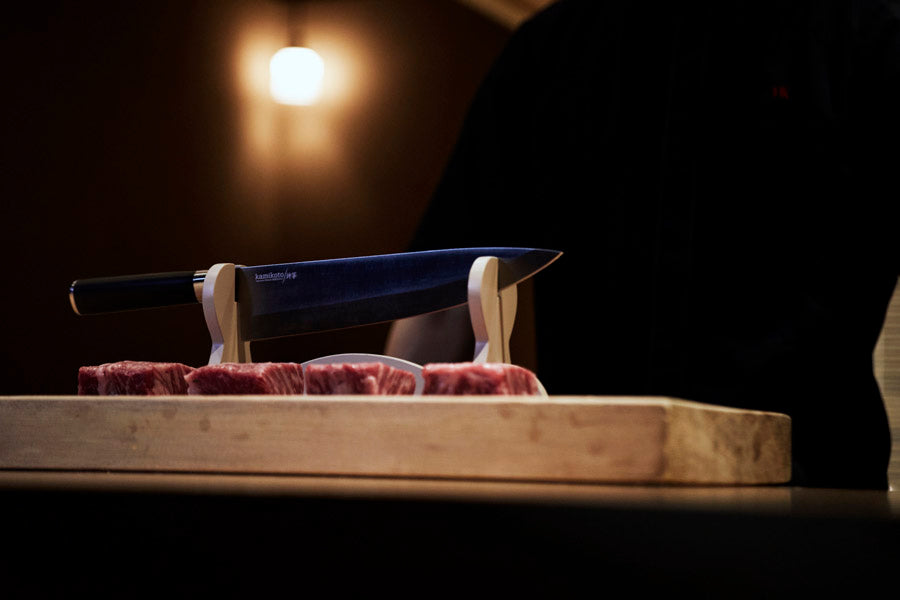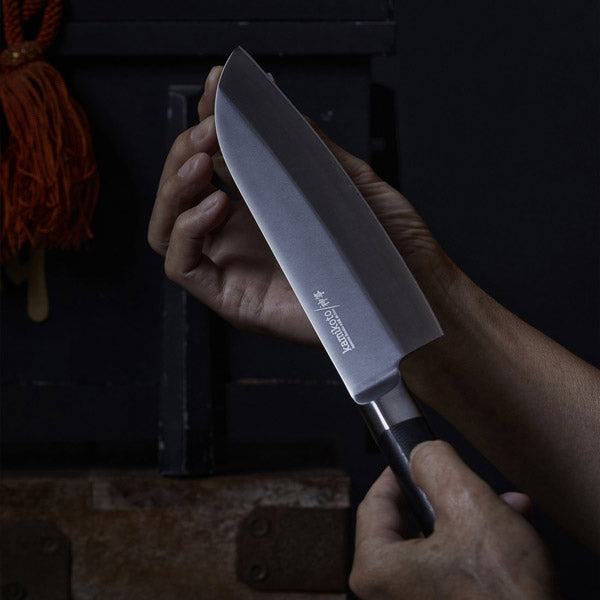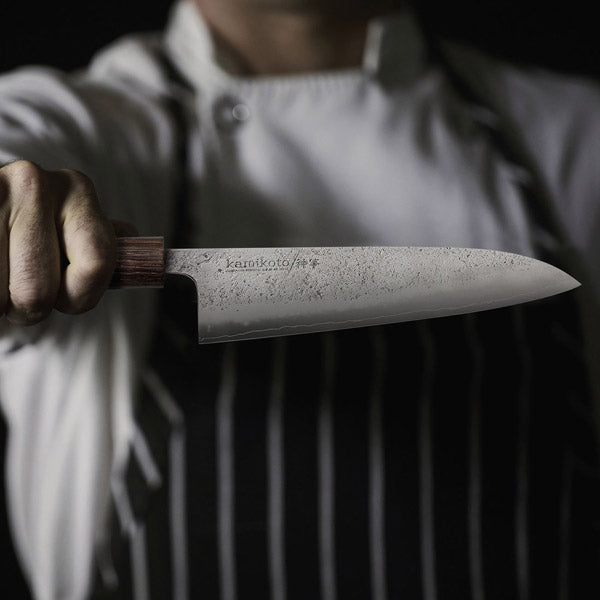
Ask any professional chef about the most important feature of their knives and they will most likely say their level of sharpness. Sharp knives allow chefs to make the right cuts to produce beautiful dishes, both in terms of presentation and flavor. This is precisely why the bevel - or angle - of a knife is so important. It determines how sharp, durable and ultimately, efficient, the knife is.
What are knife bevels?
A knife bevel refers to surface that has been ground to form the knife’s edge. A close inspection of a knife will reveal a slight angle/incline on either one or both sides that runs down to the edge. This is the bevel. If there is one on both sides, then it is a double bevel knife. If there is one on only one side, then it is a single bevel knife.
The bevel can be ground to a variety of different angles. Generally, the smaller the angle, the sharper the knife.
Difference between a bevel and an edge

The edge of the knife is the sharpest part of the knife that slices into the ingredient. It is located on the bottom-most part of the knife, extending from the heel to the tip. The bevel is the angle leading to the edge of the knife; the component that is ground to form the edge.
What's the difference between a single and double bevel knife?
The difference is straight-forward:
-
Single bevel knife: the angle is formed on one side only
- Double-bevel knife: the angle is formed on both sides
Most European knives are double-beveled. They come in a variety of edge styles with the most common being a V-shape, however there are also compound (double-layered V edge) and convex shapes.
Many Japanese knives are single-beveled, such as the Santoku Genten. One side of the blade is completely straight, while the other contains the angle that forms the edge. These knives are sometimes referred to as chisel edge.
Single Bevel Knife Uses
Single bevel knives are favored in specific types of cooking, such as Japanese, as they offer a key advantage – they are extremely sharp. This is due to the fact they only need to be honed on one side so it is easier to create a much smaller, thus sharper, angle. This allows precision slicing, dicing and cutting which is essential in Japanese cuisine, particularly when crafting sushi.
A single bevel knife also allows the chef to make long, unbroken and wafer-like cuts, which is very important when preparing certain Japanese vegetables (ie peeling daikon). It is difficult to achieve unbroken cuts such as these with a double-bevel knife.
What angle do you sharpen a single bevel knife?
A single bevel knife can benefit from a sharpening angle anywhere from 15 – 17 degrees. This produces a very fine or sharp edge, which is essential when cutting delicate fish, seafood, meat and vegetables.
As there is only one bevel, these knives require less work to sharpen. However, they are of a delicate nature and it does take time and practice to develop the correct technique particularly when using a whetstone, which is a superior method of sharpening.
Double Bevel Knife Uses

A double bevel knife, such as the Santoku Ganjo, has many uses. Generally speaking, it can be used for a wide variety of tasks that to do not involve extremely intricate work such as cutting fish to make sushi or peeling long, unbroken pieces of thin vegetables.
What angle do you sharpen a double bevel knife?
A double bevel knife can be sharpened between 20 – 30 degrees on each side. Sharpening to the higher angle (ie 30 degrees) would occur if the knife is used for chopping or cutting dense meats and vegetables as it needs to be more durable. Again, is it best to use a whetstone when sharpening and be sure to create the same angle on each side of the bevel.Those are just a few things to consider when it comes to the differences between a single and double-bevel knife. Cutting with single-bevel knives is a skill that takes some time to master but in doing so, enables the chef to produce superior slices and dices to create acclaim-worthy dishes.


